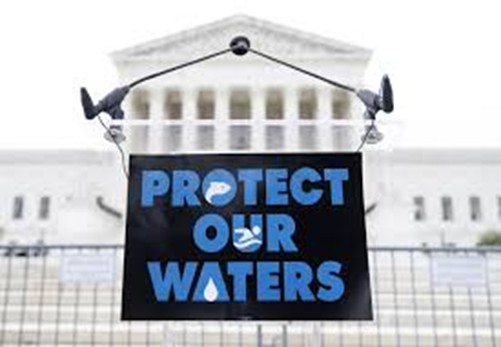By Ben Chisam.
On January 16, 2025, a fire broke out in Moss Landing, California at the world’s largest lithium-ion battery storage facility. The fire burned for several days, and 1,200 residents were temporarily evacuated. While this was the fourth fire at the facility since 2019, this event was “much more significant” according to professor Dustin Mulvaney at San José State University. The photos are just devastating.
Shortly after the fire, community members began to complain of symptoms like headaches, nosebleeds, and a metallic taste in the mouth. Many have been concerned that the fire released toxic chemicals into the environment which may cause negative health impacts. Additionally, the region is known for growing fruits and vegetables, and some question whether this produce will be safe to consume in the future. To make matters worse, the facility reignited on February 18 and burned for 2 days.
Within a few days after January 16, the group Never Again Moss Landing (NAML) was formed by community members to share information about each other’s symptoms. Within a week, volunteers collected over 100 dust samples to test for heavy metals deposited by the fire. In recent weeks, NAML has taken direct action to demand that government officials provide resources to victims and pass legislation to prevent future accidents. They have created a website (neveragainmosslanding.org) where you can learn more about the information they’ve collected and upcoming events.
Thus far, CHEJ has supported Never Again Moss Landing’s fight in a couple ways. We began by independently analyzing and summarizing soil data collected by Dr. Ivan Aiello at San José State University shortly after the fire. We came to similar conclusions as many others studying Moss Landing. There were significant increases in cobalt, manganese, and nickel in the soil after the fire, with average concentrations above EPA Regional Screening Levels. These results signify a threat to human health, as cobalt and nickel are carcinogenic while cobalt and manganese are neurotoxic. This may just be the tip of the iceberg, as it’s likely that many other substances besides the metals Dr. Aiello studied were present in the smoke generated by the fire. Therefore, more extensive testing of air, soil, and water is needed to account for these chemical possibilities and the threat to human health they represent.
More recently, CHEJ developed a community survey to gather information about how residents have been affected by the fire and what demands they have for the government and Vistra. The results of this survey should help shape the future of NAML’s organizing strategy. Beyond this, CHEJ’s Science Director Stephen Lester has provided general science and organizing support to NAML’s leadership.
The facility at Moss Landing is what’s known as a battery energy storage system (BESS). These systems are able to store electricity generated by renewable energy sources like solar panels and wind turbines. Because of this, places like California are adopting BESS as a strategy to mitigate climate change. However, the fires at Moss Landing put into question the safety of these facilities. Monterey County Supervisor Glenn Church has compared the event to the 1979 Three Mile Island accident, which led to stricter safety protocols in nuclear power plants: ““If renewable energy is going to be the future, it really needs to be safe energy. There’s got to be lessons learned from this. There really needs to be a full independent investigation of what’s happened here.”
While battery energy storage systems like the facility at Moss Landing are meant to address climate change, they are clearly still capable of harming human and environmental health. If these systems are to become widespread, it’s essential that action be taken to protect communities from toxic contamination in the future. California state assembly member Dawn Addis has introduced a bill to require new regulations for energy storage facilities and the utilities commission has proposed new safety protocols. Climate change is an urgent problem, but we need to ensure that “clean” energy is clean for all.










